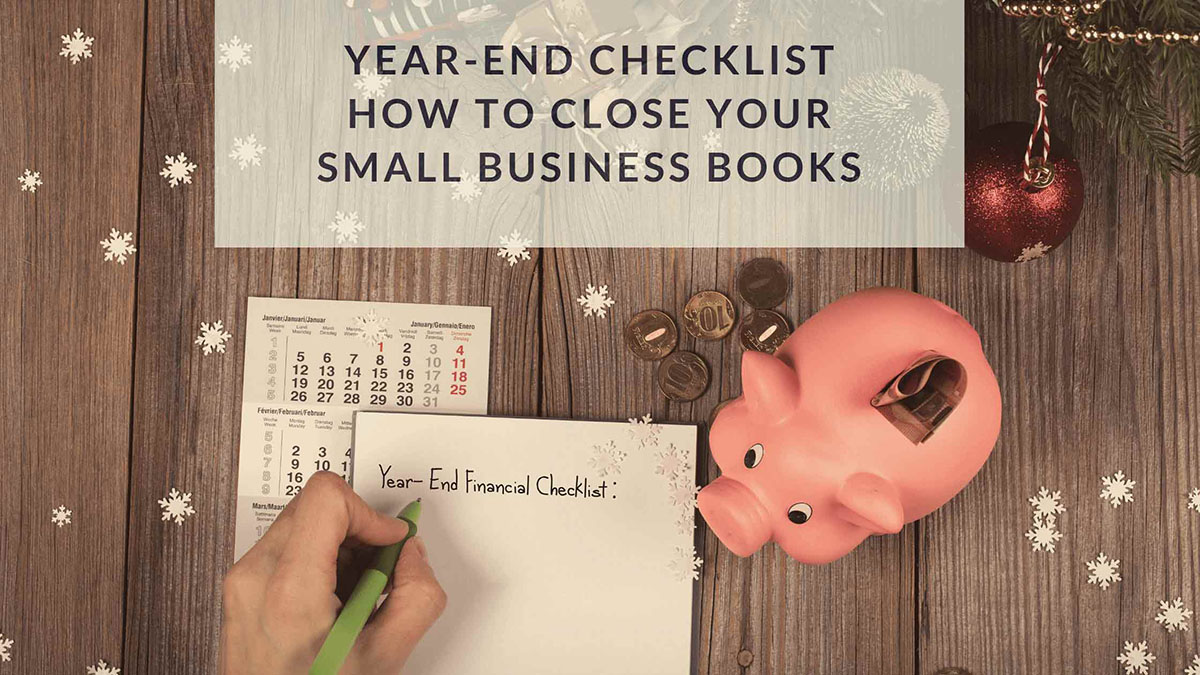

Finance
How To Buy Wholesale For Small Business
Published: November 25, 2023
Learn how to buy wholesale for your small business and save money on your finance. Find tips, strategies, and resources to help you succeed in sourcing products at wholesale prices.
(Many of the links in this article redirect to a specific reviewed product. Your purchase of these products through affiliate links helps to generate commission for LiveWell, at no extra cost. Learn more)
Table of Contents
Introduction
Starting a small business can be an exciting endeavor, but it also comes with its fair share of challenges. One of the key challenges for small business owners is sourcing products at affordable prices while maintaining quality. This is where buying wholesale can be a game-changer.
Wholesale purchasing involves buying products in bulk directly from manufacturers or distributors at discounted rates. It allows small businesses to access a wide range of products at lower prices, making it an attractive option to maximize profit margins. However, it’s crucial to understand the intricacies of wholesale buying to ensure success.
In this article, we will explore the ins and outs of buying wholesale for small businesses. We will discuss the benefits of wholesale purchasing, how to find reliable suppliers, research products, negotiate prices, place orders, and manage inventory effectively. By the end of this article, you will have a comprehensive understanding of the wholesale buying process and valuable tips for success.
Understanding Wholesale
Wholesale purchasing is the act of buying goods or merchandise in large quantities from manufacturers or distributors at significantly lower prices. It is typically done with the intention of reselling the products to customers or using them as inventory for a small business.
Wholesale prices are considerably lower than retail prices because they are based on bulk purchases. Manufacturers and distributors offer discounts to wholesalers as a way to incentivize them to buy large quantities of products. This allows wholesalers to generate profit by selling the products at a retail price that is higher than the wholesale price.
Wholesale buying is not limited to a specific industry. Almost every sector, from fashion and electronics to groceries and household items, offers wholesale options. This makes it accessible to a wide range of small businesses, regardless of their niche.
There are two types of wholesale purchasing: trade wholesale and consumer wholesale. Trade wholesale involves buying products for the purpose of reselling them to businesses or retailers. Consumer wholesale, on the other hand, involves purchasing goods for personal use or consumption in large quantities. For the purpose of this article, we will focus on trade wholesale, which is more relevant for small businesses.
It’s essential to note that wholesale buying requires meeting certain minimum order quantities (MOQs). MOQs vary depending on the supplier and the product. Companies set MOQs to ensure that wholesalers are purchasing in volume, making it financially feasible for both parties involved.
Understanding the concept of wholesale is the first step in leveraging it for the benefit of your small business. In the following sections, we will delve deeper into the advantages of buying wholesale and provide actionable tips for successful wholesale purchasing.
Benefits of Buying Wholesale for Small Businesses
Buying wholesale offers numerous benefits for small businesses. Let’s explore some of the key advantages:
- Cost Savings: Perhaps the most significant advantage of buying wholesale is the cost savings it provides. By purchasing products directly from manufacturers or distributors in large quantities, small businesses can secure lower prices per unit, resulting in higher profit margins.
- Wide Variety of Products: Wholesale suppliers typically offer a wide range of products across different categories. This allows small businesses to access a vast selection of goods, giving them the flexibility to diversify their product offerings and cater to various customer preferences.
- Competitive Edge: With the reduced cost per unit, small businesses can competitively price their products. This enables them to gain a competitive edge in the market by offering affordable prices to customers while still maintaining profitability.
- Better Control of Inventory: Buying wholesale allows small businesses to have more control over their inventory. With larger quantities of products on hand, they can ensure consistent availability of popular items, reducing the risk of stockouts and providing a better shopping experience for customers.
- Building Relationships with Suppliers: Establishing strong relationships with wholesale suppliers can be highly beneficial for small businesses. Over time, a reliable partnership can lead to preferential pricing, access to exclusive products, and better support from suppliers.
- Opportunity for Growth: As small businesses grow, their demand for products increases. Buying wholesale allows for scalability, as it offers the ability to purchase larger quantities as needed, ensuring the business has a steady supply of inventory to meet customer demands.
- Branding Opportunities: Some wholesalers offer customization options for their products. This presents an opportunity for small businesses to create their own unique branded products, enhancing their brand identity and customer loyalty.
These benefits make buying wholesale a compelling option for small businesses looking to save costs, diversify their product range, and gain a competitive edge in the market. In the next sections, we will delve into how to find reliable wholesale suppliers and research products to make informed purchasing decisions.
Finding Wholesale Suppliers
When it comes to buying wholesale, finding reliable suppliers is crucial for the success of your small business. Here are some effective strategies for finding wholesale suppliers:
- Industry Trade Shows and Exhibitions: Attend industry-specific trade shows and exhibitions to connect with potential wholesale suppliers. These events bring together manufacturers, distributors, and wholesalers, providing an excellent opportunity to establish relationships and discover new products.
- Online Wholesale Directories: Utilize online wholesale directories such as SaleHoo, Worldwide Brands, or Alibaba to search for reputable wholesale suppliers. These directories provide comprehensive information about suppliers, including their product range, minimum order quantities, and contact details.
- Trade Associations and Chambers of Commerce: Joining trade associations and chambers of commerce related to your industry can help you connect with wholesale suppliers. These organizations often have directory listings or member networks that can provide valuable leads.
- Referrals and Recommendations: Reach out to fellow business owners or industry professionals for referrals and recommendations on reliable wholesale suppliers. Personal recommendations can often be trusted and save you time in the search process.
- Google Search: Conducting thorough online research using search engines like Google can also yield results. Try searching for specific keywords related to your industry, along with terms like “wholesale supplier” or “bulk supplier,” to find potential suppliers.
- Social Media Platforms: Many wholesale suppliers maintain a presence on social media platforms such as LinkedIn, Instagram, or Facebook. Search for relevant hashtags or industry-specific groups to discover suppliers who actively engage with potential customers.
- Attend Trade Fairs: Attend local and international trade fairs and exhibitions dedicated to your industry. These events provide an opportunity to meet suppliers face-to-face, assess the quality of their products, and discuss potential business partnerships.
When evaluating potential wholesale suppliers, it’s essential to consider factors such as their reputation, customer reviews, product quality, pricing, and shipping policies. Reach out to multiple suppliers, request samples, and ask for references to ensure you are partnering with reliable and trustworthy businesses.
Once you have identified potential suppliers, it’s necessary to research their credibility and reliability before placing orders. In the next section, we will discuss how to research wholesale products to make informed purchasing decisions.
Researching Wholesale Products
Researching wholesale products is a critical step in the wholesale buying process. It helps you find the right products that align with your target market and ensure you make informed purchasing decisions. Here are some key steps to effectively research wholesale products:
- Identify Your Target Market: Understand your target market’s preferences, needs, and buying habits. This will guide your product research and help you select items that are in high demand and have the potential for profitability.
- Stay Updated with Industry Trends: Keep a pulse on the latest industry trends and consumer preferences. This will help you identify potentially popular products that can give your business a competitive edge.
- Competitor Analysis: Analyze your competitors to understand the products they offer and their pricing strategies. This can help you identify gaps in the market and find unique products to differentiate your business.
- Product Quality and Reliability: Research the quality and reliability of the wholesale products you are interested in. Look for reviews, ratings, and customer feedback to ensure they meet the expectations of your target market.
- Pricing and Profit Margins: Calculate the potential profit margins by comparing the wholesale prices with the expected retail prices. Consider factors such as shipping costs, packaging, and any additional expenses associated with the products.
- Sourcing Options: Explore different sourcing options for your products. Some wholesalers may offer private labeling or customization options, allowing you to create unique products under your brand name.
- Product Samples: Request samples from potential suppliers to assess the quality, packaging, and overall appeal of the products. This will help you make better-informed decisions and ensure the products meet your requirements.
- Seasonality and Trends: Take into account seasonal variations and trends when researching wholesale products. Some products may perform exceptionally well during specific seasons, holidays, or events, while others may have a consistent demand throughout the year.
- Supplier Reliability: Research the reputation, customer reviews, and track record of potential wholesale suppliers. Look for suppliers who have a history of delivering quality products on time and have a good reputation within the industry.
- Customer Preferences: Engage with your target audience and gather insights into their preferences, needs, and product recommendations. This can be done through surveys, online forums, social media interactions, or direct communication.
By thoroughly researching wholesale products, you can ensure you are making informed decisions and selecting products that have the potential for success in your market. This will help you build a strong product portfolio and enhance your chances of satisfying customer demands.
Negotiating Wholesale Prices
Once you have identified potential wholesale suppliers and researched the products you are interested in, the next step is to negotiate the wholesale prices. Negotiation is a crucial skill that can help you secure better deals and maximize your profit margins. Here are some effective strategies for negotiating wholesale prices:
- Comparison Shopping: Obtain quotes from multiple suppliers for the same products and compare their prices. This will give you leverage during negotiations and allow you to choose the most competitive offer.
- Volume Purchase: Emphasize your intention to purchase in larger quantities. Suppliers are often more willing to negotiate lower prices when they know they will be selling in bulk.
- Long-Term Partnership: Highlight your interest in establishing a long-term business relationship with the supplier. This can incentivize them to offer better pricing to secure ongoing business.
- Highlight Your Value: Showcase your business’s value proposition, such as your target market, marketing strategies, and potential for growth. Suppliers may be more willing to negotiate prices if they see the potential for increased sales.
- Suggest a Minimum Order Quantity (MOQ): Propose a higher MOQ than the supplier’s initial requirement. This shows your commitment and can potentially lead to better pricing terms.
- Bulk Payment: Offer to pay in full upfront or provide a substantial deposit. Suppliers may be more inclined to offer discounts or better pricing terms when they receive guaranteed payment.
- Explore Pricing Options: Inquire about different pricing structures, such as tiered pricing or volume discounts. This can help you optimize your pricing based on the expected demand for different quantities of products.
- Consider Total Value: Look beyond just the price and consider other factors that add value, such as shipping costs, delivery timelines, packaging, or additional services offered by the supplier.
- Negotiate Terms and Conditions: Besides the price, negotiate other terms and conditions such as return policies, warranties, or exclusivity agreements. These negotiations can help further enhance your business’s profitability.
- Maintain Professionalism: Approach negotiations with a professional and respectful attitude. Building a positive relationship with your suppliers is essential for long-term partnership and future negotiations.
Remember that negotiation is a give-and-take process. Be prepared to compromise and find a mutually beneficial agreement. Building a strong rapport with your suppliers and maintaining open lines of communication can create a foundation for successful negotiation and collaboration.
Placing Wholesale Orders
Once you have successfully negotiated the wholesale prices with your suppliers, it’s time to place your wholesale orders. The process of placing wholesale orders requires careful attention to detail to ensure accuracy and efficiency. Here are the key steps to follow when placing wholesale orders:
- Review Order Details: Before placing the order, review all the details including the product quantities, pricing, shipping terms, and any additional charges or fees. Ensure that everything aligns with the agreed-upon terms and conditions.
- Confirm Payment Method: Discuss and agree upon the payment method with the supplier. Common payment methods for wholesale orders include bank transfers, credit cards, or payment platforms like PayPal.
- Obtain Order Confirmation: Request an order confirmation from the supplier that outlines all the agreed-upon details of the order. This serves as a written record and can help resolve any disputes or misunderstandings in the future.
- Provide Shipping Details: Provide the necessary shipping details, including your business address and any specific instructions for delivery. Ensure that the supplier has the correct information to avoid any shipping delays or issues.
- Track Order Status: Stay in communication with the supplier to track the status of your order. Inquire about the estimated shipping date and ask for tracking information once the order has been shipped.
- Receive and Inspect the Order: Once the order arrives, carefully inspect the products to ensure they meet your quality standards. Check for any damages, missing items, or discrepancies. If there are any issues, promptly notify the supplier to rectify the situation.
- Document Inventory: Keep a detailed record of the received inventory, including quantities, product codes, and any serial numbers if applicable. This will help you track and manage your inventory effectively.
- Reconcile Invoices: Compare the received products and quantities against the supplier’s invoice. Ensure that you are billed correctly for the items you received. Address any discrepancies with the supplier promptly.
- Provide Feedback: After receiving and inspecting the order, provide feedback to the supplier regarding the quality of the products, packaging, and overall service. This can help maintain a positive working relationship and improve future orders.
- Maintain Order Records: Keep thorough records of all your wholesale orders and related documents, including invoices, order confirmations, shipping details, and correspondence with suppliers. These records are invaluable for future reference and managing your business finances.
By following these steps, you can ensure that the wholesale ordering process is smooth, efficient, and accurate. Effective order placement and careful order management contribute to establishing a reliable and consistent supply chain for your small business.
Managing Wholesale Inventory
Managing wholesale inventory is essential for the smooth operation of your small business. It involves effectively tracking and organizing your stock to ensure timely fulfillment of customer orders and minimize the risk of stockouts. Here are some key strategies for managing wholesale inventory:
- Implement Inventory Management Software: Invest in inventory management software that allows you to track and manage your wholesale inventory efficiently. These tools provide real-time visibility into stock levels, automate reordering, and streamline inventory management processes.
- Set Reorder Points: Determine minimum stock levels for each product and set reorder points. When the stock reaches these points, it triggers a reorder to replenish the inventory, ensuring you never run out of popular products.
- Regularly Monitor Stock Levels: Routinely monitor your stock levels to identify any discrepancies, trends, or changes in demand. This helps you make informed decisions about when to reorder or adjust inventory quantities.
- Forecast Demand: Utilize historical sales data, market trends, and customer feedback to forecast demand for your wholesale products. This allows you to plan inventory levels and allocate resources accordingly.
- Establish Effective Supplier Relationships: Maintain open communication with your suppliers to ensure a reliable supply of products. It’s important to keep them informed about future demand projections and any changes in your business needs.
- Implement First-In, First-Out (FIFO) Method: Follow the FIFO method for inventory management, where older stock is sold before newer stock. This minimizes the risk of products becoming obsolete or expiring.
- Regularly Conduct Physical Inventory Audits: Conduct periodic physical inventory audits to reconcile the actual stock levels with the recorded quantities in your inventory management system. This helps identify and resolve any discrepancies.
- Efficient Warehouse Organization: Organize your warehouse in a logical and systematic manner. Proper labeling, categorization, and storage of products make it easier to locate items, reduce picking errors, and optimize storage space.
- Monitor Product Performance: Continuously evaluate the performance of your wholesale products. Identify slow-moving inventory, sell-offs, or market trends that may impact demand. Adjust inventory levels or discontinue products as necessary.
- Track Returns and Exchanges: Implement a process to handle returns and exchanges efficiently. This includes properly documenting returned products, inspecting them for damage, and updating inventory levels accordingly.
Effective wholesale inventory management is crucial for maintaining customer satisfaction, optimizing cash flow, and avoiding unnecessary expenses. By implementing these strategies, you can streamline your inventory operations and ensure that you always have the right products available at the right time.
Tips for Successful Wholesale Buying
Wholesale buying can be a great way to save costs and expand the product range for your small business. To ensure successful wholesale buying, consider these valuable tips:
- Do Your Research: Take the time to research and understand your industry, target market, and the products you wish to source wholesale. This will help you make informed decisions and identify reliable suppliers.
- Build Relationships: Cultivate strong relationships with your wholesale suppliers. Regular communication, trust, and mutual respect can lead to better deals, more support, and exclusive product offerings.
- Evaluate Supplier Reputation: Before partnering with a wholesale supplier, thoroughly research their reputation. Check customer reviews, ratings, and their track record in the industry to ensure their reliability and quality.
- Ask for Samples: Request samples of products before placing large wholesale orders. This allows you to assess the quality, functionality, and packaging of the products to make sure they meet your standards.
- Understand Terms and Conditions: Read and understand all terms and conditions outlined by the supplier, including minimum order quantities, payment terms, returns, and shipping policies. Clarify any uncertainties before finalizing the purchase.
- Negotiate Pricing: Utilize negotiation skills to secure the best pricing for your wholesale purchases. Compare quotes from multiple suppliers, leverage volume purchases, and highlight your value to negotiate favorable terms.
- Monitor Market Trends: Stay updated on market trends, consumer preferences, and industry developments. This knowledge helps you identify new products, adjust inventory levels, and stay competitive in your market.
- Establish Realistic Budgets: Have a clear understanding of your financial capabilities and establish budgets for wholesale purchasing. This ensures you can meet your financial obligations and maintain profitability.
- Track and Analyze Sales Performance: Regularly analyze sales data to identify top-selling products, slow-moving inventory, and trends. Adjust your purchasing strategy accordingly to optimize sales and inventory management.
- Continuously Seek New Suppliers: Explore new supplier options to diversify your product offerings and secure competitive pricing. It also provides backup options in case your current suppliers face challenges or stock shortages.
- Stay Flexible: Be open and adaptable to changes in the marketplace. Consumer preferences, industry trends, and economic factors can impact demand and product availability. Adapt your wholesale buying strategy accordingly.
By following these tips, you can navigate the wholesale buying process effectively and maximize the benefits for your small business. Remember, wholesale buying is an ongoing process that requires constant evaluation, adjustment, and relationship-building to ensure long-term success.
Conclusion
Buying wholesale is a valuable strategy for small businesses looking to save costs, expand their product range, and gain a competitive edge in the market. By understanding the ins and outs of wholesale buying, small business owners can effectively navigate the process and reap the many benefits it offers.
Throughout this article, we have explored the various aspects of wholesale purchasing, from understanding the concept of wholesale and its advantages, to finding reliable suppliers, researching products, negotiating prices, placing orders, and managing inventory. Each step is crucial in ensuring successful wholesale buying and maintaining a steady supply of products for your business.
Remember to conduct thorough research, build strong relationships with suppliers, and stay updated on industry trends and consumer preferences. Negotiating prices, tracking inventory levels, and analyzing sales data will help optimize your wholesale buying strategy and maximize your profitability.
Successful wholesale buying requires a combination of careful planning, effective communication, and continuous evaluation. By implementing the tips and strategies outlined in this article, small businesses can take full advantage of the opportunities that wholesale purchasing offers.
Ultimately, wholesale buying can be a key driver of growth and success for small businesses. It allows for cost savings, access to a wide variety of products, and the ability to offer competitive prices to customers. With the right approach and a focus on building strong supplier relationships, small businesses can thrive in today’s competitive marketplace.














